Located 130 miles from Barcelona in the middle of the western Mediterranean, the island of Menorca is famed for the beauty of its coastline and for being quieter and better preserved than Mallorca and Ibiza, its higher-profile Balearic sisters. Alicia Casals San Miguel and Karl Johan Nyqvist of NOMO Studio have made something of a reputation on the island for a series of vacation retreats they’ve designed there. With this one, nicknamed Stepped House, the Barcelona- and Stockholm-based architects turned the clients’ request for something low-maintenance into a rigorous Miesian exercise in the assemblage of unadorned building blocks.
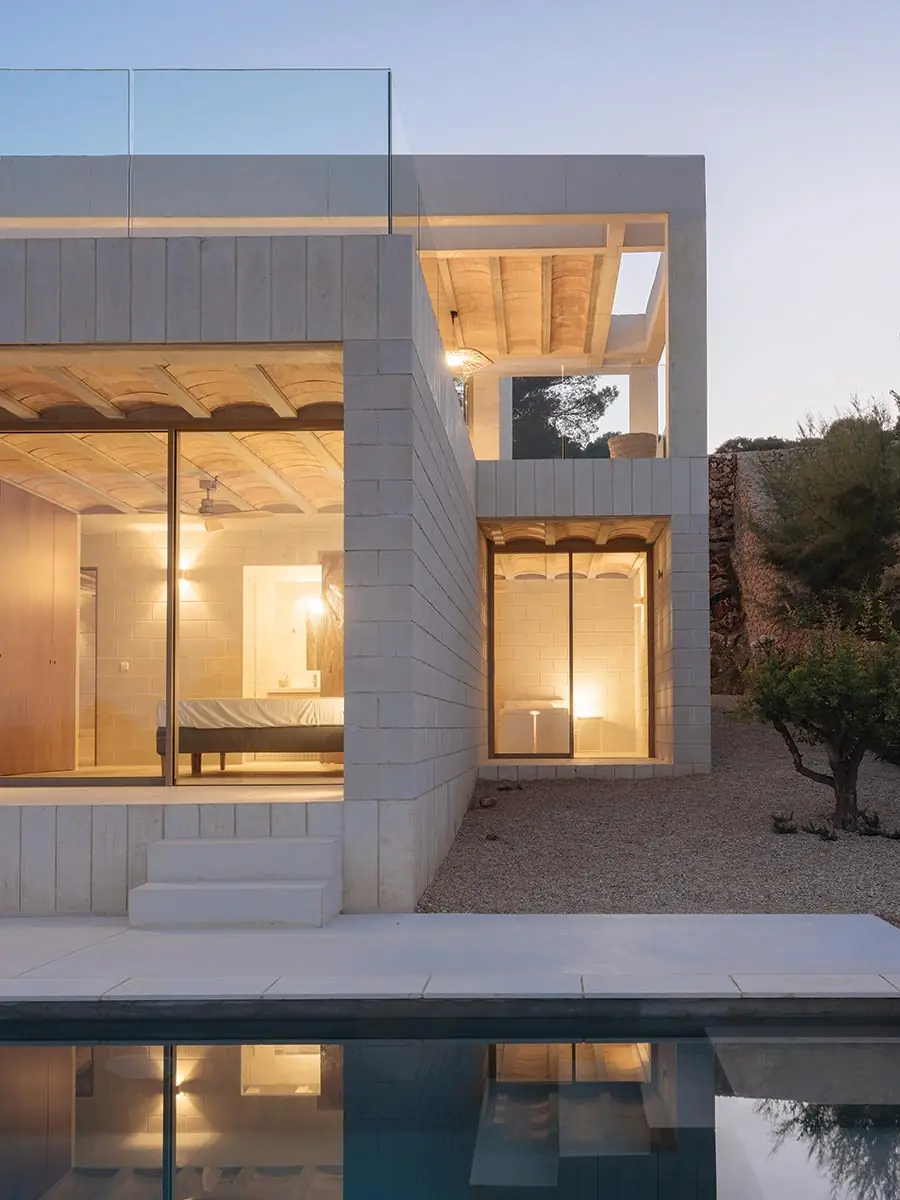
The house’s form was dictated by the dimensions of standard concrete blocks (above and top of page). Photo © Joan Guillamat, click to enlarge.
Situated in an early-2000s subdivision, the 6,500-square-foot plot slopes steeply, descending about 30 feet between the streets that bookend its shorter sides. With the sea half a mile to the east, at the lower end, the house steps cheerfully down the terrain to take advantage of the views. “Our clients, a couple with two teenage children, came to us with a basic program, but otherwise gave us fairly free rein,” recalls Casals. “One big discussion concerned where to place the main living space,” continues Nyqvist. “Some clients want a connection to the yard, but there’s a risk that another house gets built, blocking their view.” In this case, because the site’s slope and size made the yard difficult to use, NOMO’s clients opted for a top-floor living area with bedrooms underneath, while parking and a swimming pool occupy the lowest part of the property. Although the local building code restricts the size of second stories to just 15 percent of the plot, this arrangement allowed for generous exterior spaces above the bedrooms, “in a climate where people spend most of their time outdoors,” as Casals points out.
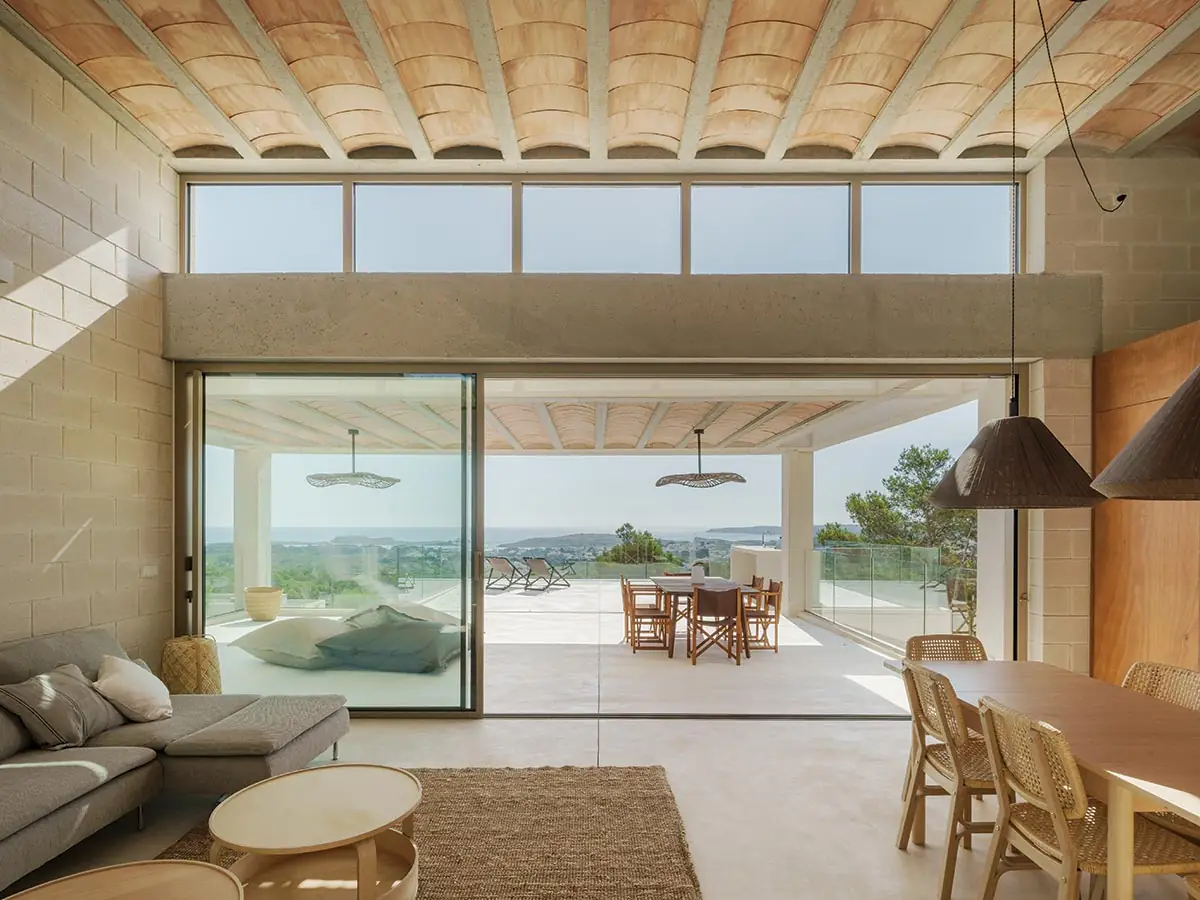
From a hilltop site in Coves Noves, the house offers panoramic views of the Port of Addaia to the east. Photo © Joan Guillamat
The house has two entrances, one on each floor. Arriving from above, via a short footbridge, one immediately enters the combined kitchen, living, and dining space, whose modest size is offset by its tall ceiling, clerestory windows, and sliding glass doors that dissolve the boundary between inside and out. As a result, space flows seamlessly onto the shaded veranda, which is followed by a large terrace with a built-in barbecue. To appease the diktats of code, the veranda’s roof floats in the middle of its concrete frame, so that no building inspector might think it could be enclosed to form an extra room. Downstairs, three bedrooms are shaded by deep loggias, while mechanical equipment is tucked under the kitchen at the rear.
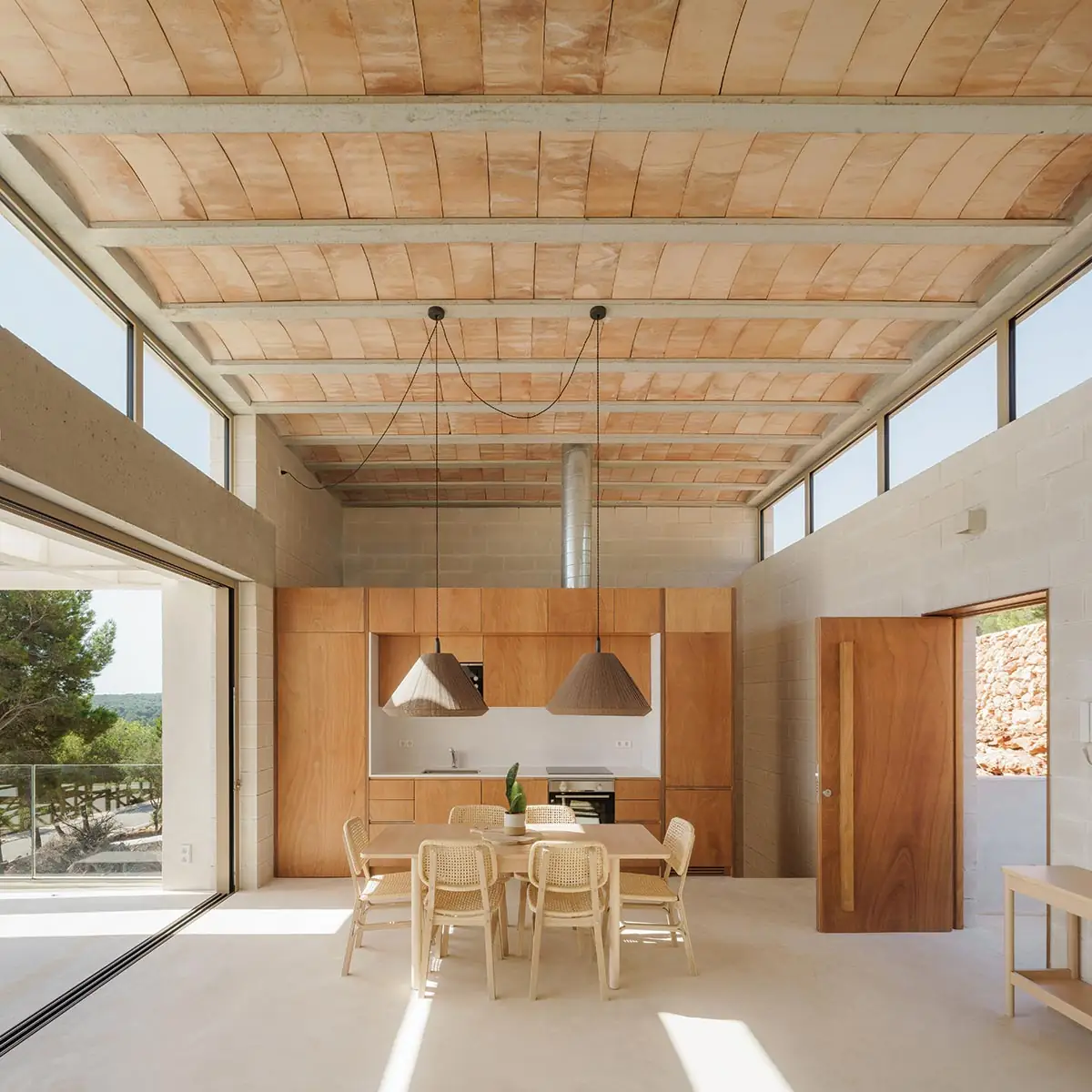
Clerestory windows flood living areas with light. Photo © Joan Guillamat
“Being small and rather isolated, Menorca has a limited construction culture,” says Casals. “Today the principal way of building is with concrete and cinder block, so we took that as our starting point.” But, eschewing the usual rough workmanship hidden under a thick coat of plaster (a finish that needs constant repair and repainting in Menorca’s unforgiving salt winds), NOMO selected high-quality weather-resistant concrete blocks that they left exposed inside and out, combining them with equally naked ceiling vaults in terra-cotta. As Nyqvist observes, these basic choices affected the dimensions of the entire house, whose room proportions were dictated by the standardized 20-centimeter module of the concrete block and the 60-centimeter module of the terra-cotta vaults (approximately 7¾ and 23½ inches respectively).
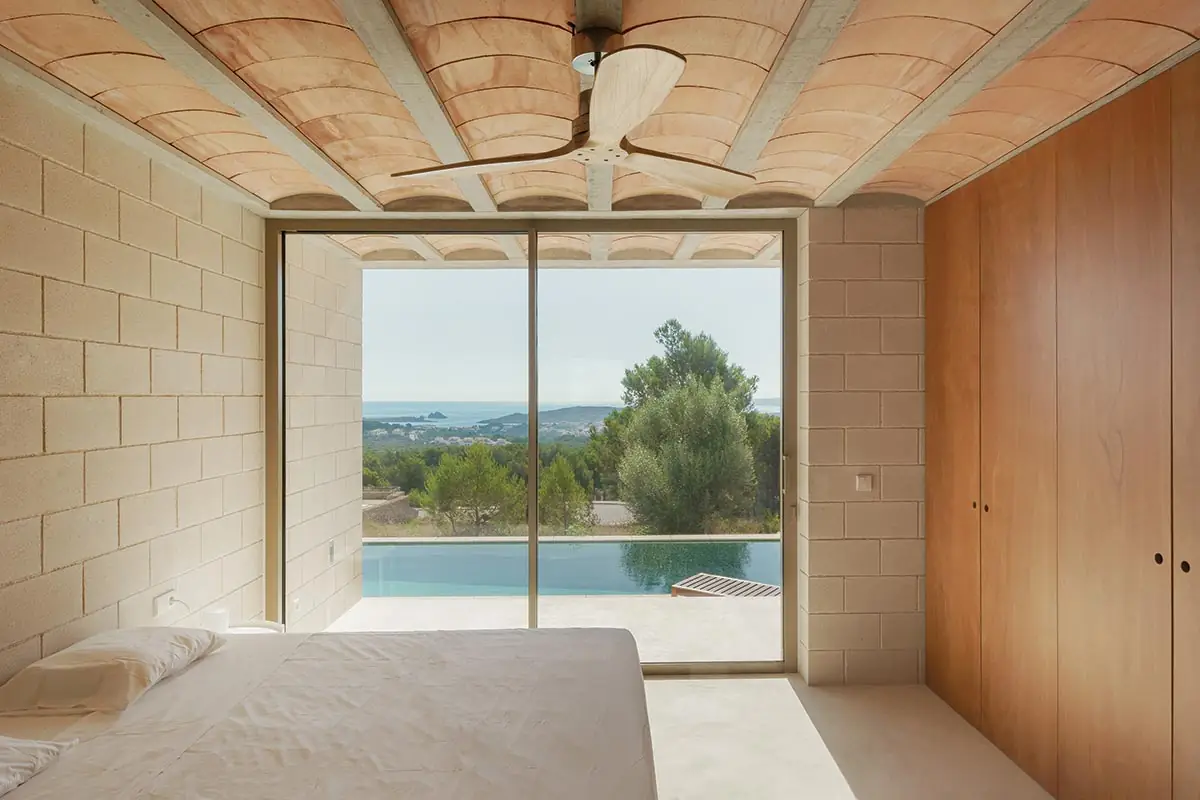
1
Concrete blocks, terra-cotta vaults, and okoumé define interiors (1 & 2). Photos © Joan Guillamat
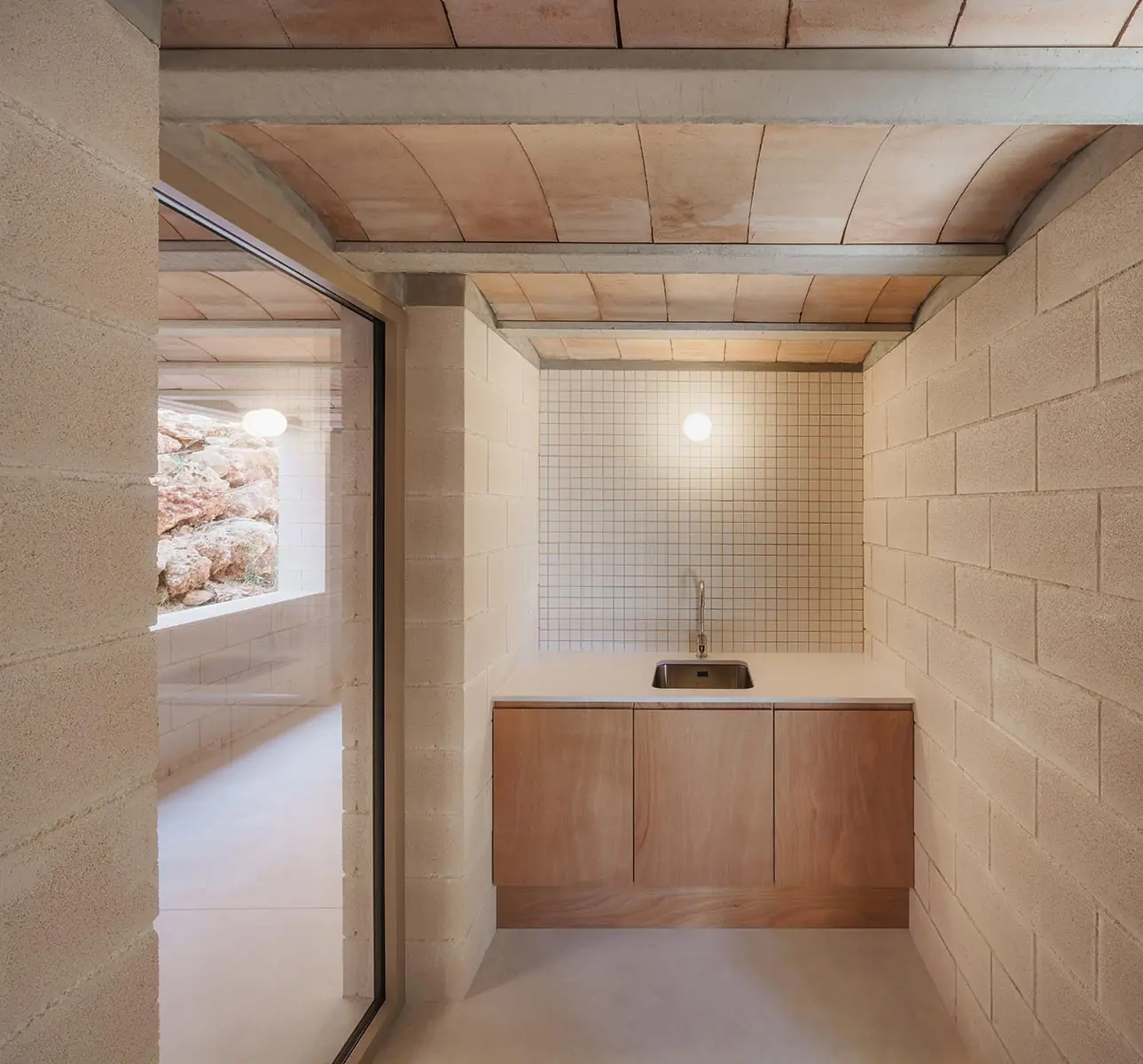
2
Indeed, these decisions even determined how the envelope was built: first, the load-bearing inner walls were laid; then, plumbing, HVAC, wiring, and a layer of insulation were installed; and, finally, external walls were raised to seal the structure. Since no mistakes could be corrected afterward, the architects had to detail the entire house before construction began, from the layout of the concrete and terra-cotta blocks to the placement of sockets and switches. “It was very labor-intensive up front,” recalls Casals, “but on-site there was no discussion, because there was nothing left to decide.” Though the outer walls (which include lintel courses in local marès sandstone) went up without the need to cut a single concrete block, the odd compromise was made when turning corners inside. The result is an extraordinarily crisp and clean building, whose sobriety is complemented by matte concrete floors and millwork in okoumé, an African hardwood chosen for its resistance to the marine climate. NOMO’s mission even extended to furniture, which they were asked to source for under $10,000. “This is a beach house,” Casals explains. “People like tough, inexpensive furniture that can withstand water and sand.” The clients also seem to enjoy a clutter-free and rather impersonal vacation environment, where nothing disturbs the visual calm—not even a picture on the wall.
Click plans to enlarge
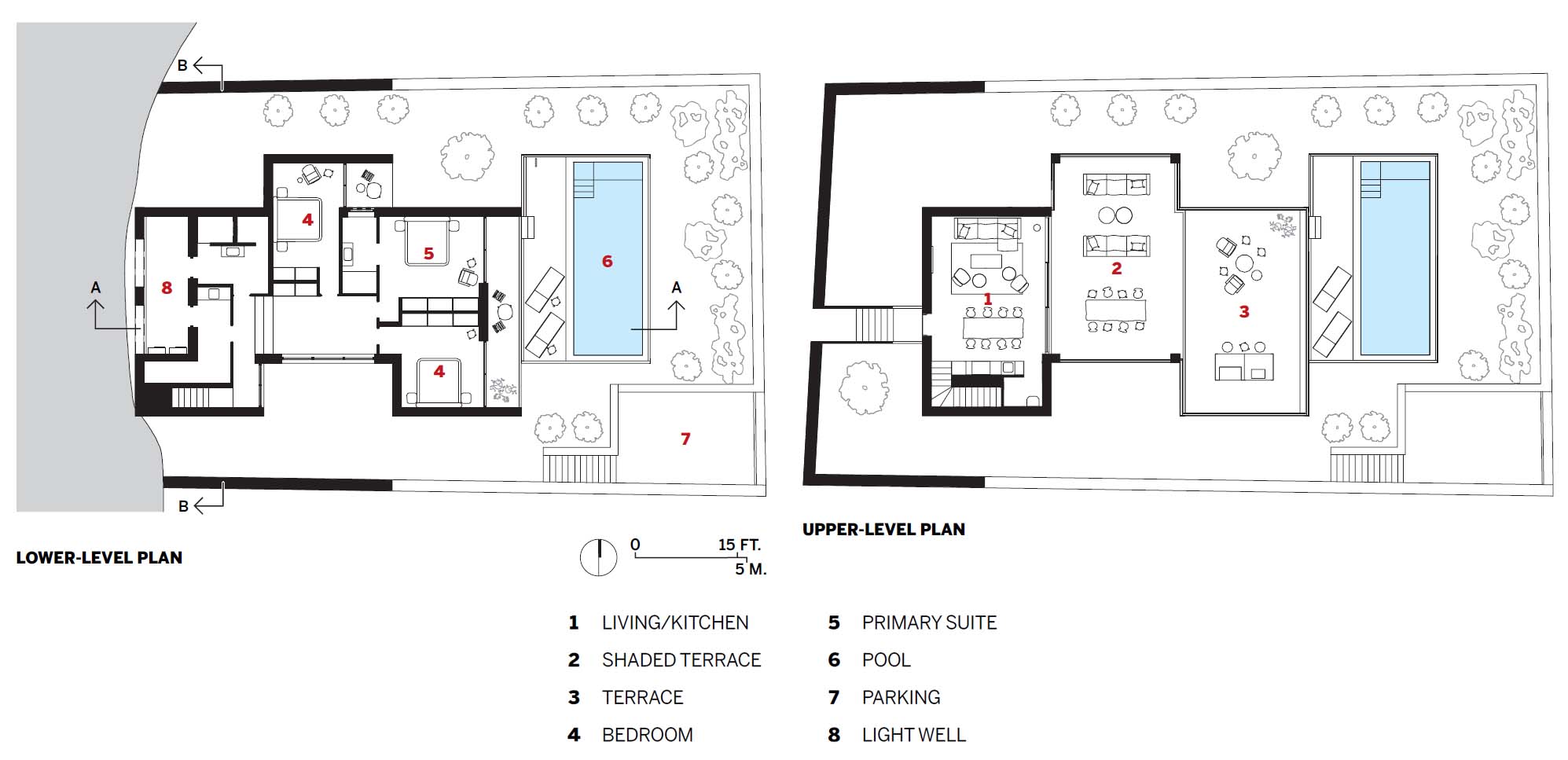
Click sections to enlarge
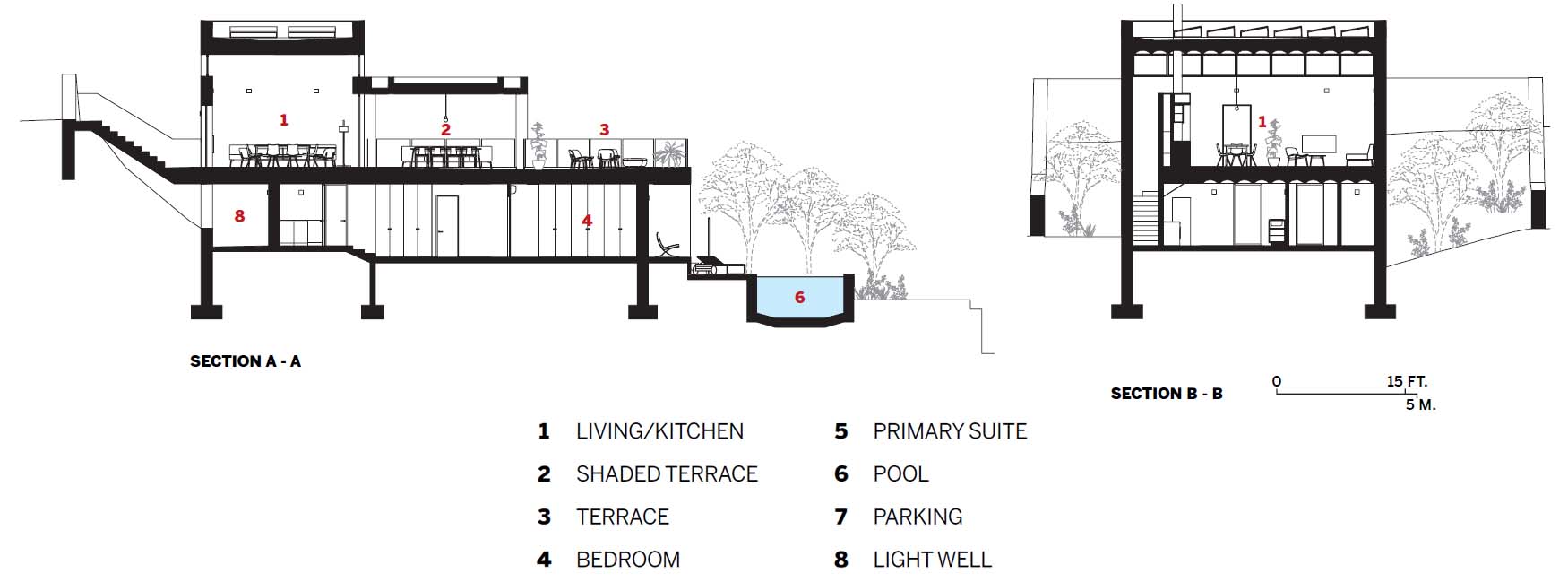
Credits
Architect:
NOMO Studio — Alicia Casals San Miguel, Karl Johan Nyqvist, principals; Mira Botseva, Jennifer Méndez, design team
Engineers:
Mus&Segui Arquitectos Técnicos (civil); Windmill Structural Consultants (structural)
Consultants:
Gabinet Tècnic (survey); PIMELAB (geotechnical)
General Contractor:
Construcciones Alpera
Size:
2,260 square feet
Cost:
$380,265
Completion Date:
June 2022
Sources
Masonry:
Prefabricats Lleida
Terra-Cotta:
Cerámicas Lázaro
Windows:
Technal
Hardware:
dnd (locksets)
Fixtures:
Faro Lantau (ceiling fan); Roca, Blanco Lanora (faucets); TEKA Belinea (basins)




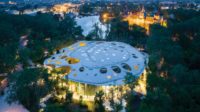
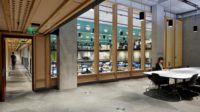
Post a comment to this article
Report Abusive Comment